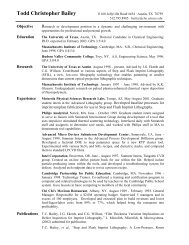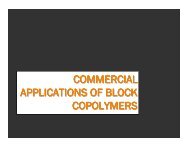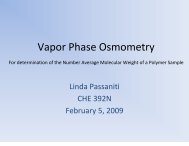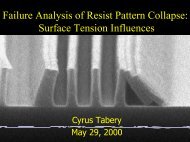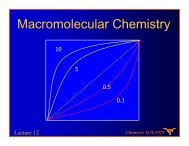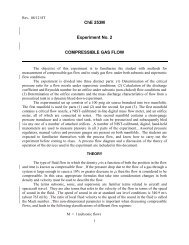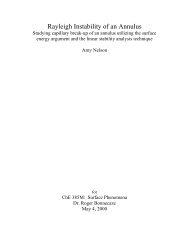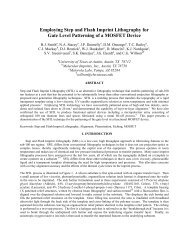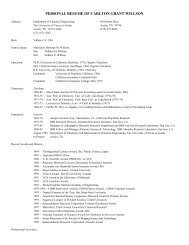Asymmetric fluid-structure dynamics in nanoscale imprint lithography
Asymmetric fluid-structure dynamics in nanoscale imprint lithography
Asymmetric fluid-structure dynamics in nanoscale imprint lithography
- No tags were found...
Create successful ePaper yourself
Turn your PDF publications into a flip-book with our unique Google optimized e-Paper software.
Connected toFlexure R<strong>in</strong>gConnected toBase StructureUPRFigure 3.5 Actuation legA distributed flexure r<strong>in</strong>g, shown <strong>in</strong> Figure 3.6, is used to provide theappropriate k<strong>in</strong>ematic constra<strong>in</strong>ts for the l<strong>in</strong>ear actuators. The distributed flexurer<strong>in</strong>g allows the high-resolution actuators to br<strong>in</strong>g the template and wafer surfaces<strong>in</strong>to parallel alignment and squeeze the etch barrier down to an optimal base layerthickness while m<strong>in</strong>imiz<strong>in</strong>g lateral motion between the template and wafer. Theactuators generate push<strong>in</strong>g/pull<strong>in</strong>g motions on the distributed flexure r<strong>in</strong>g toprovide a three-po<strong>in</strong>t position control of the template orientation as shownschematically <strong>in</strong> Figure 3.7. Actuation force needs to be large enough togenerate 15 psi when the flexure r<strong>in</strong>g is fully deflected <strong>in</strong> one direction.Fixed toBaseStructureFigure 3.6 Distributed flexure r<strong>in</strong>g47



